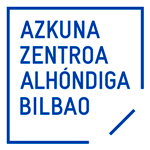
FEDERICO GUZMÁN
PAINTING
Seville, 1964. Artist. I understand art as a free practice that embraces the sensitivity and the conscious action of nature. I tackle paint from a holistic perspective of an aesthetic process, practicing art as a game, as an activism and as a form of self-discovery. Some recent projects are Perséfone sin velo (Persphone without a veil, Galería Juana de Aizpuru, Madrid); Al borde del mundo (On the edge of the world, IVAM, Valencia); Tuiza: las culturas de la jaima (Palacio de Cristal del Parque del Retiro, MNCARS, Madrid) y La canción del tomaco (MEIAC, Badajoz).
Share:
The proposal consists of a pictorial series that explores my relationship with the mysteries of the inspiration of myth and imagination. The investigation dives deep into indigenous origins of our culture in search of knowledge and contemplates three chapters. The first is about initiation and the second about transformation. The third part tackles the energetic consciousness that encourages all life forms and that we may call a “spirituality of the land”. I propose to follow the trail of an ideal aesthetic previous to our postulated classics of art. As some historians explain, art originated in a magical experience in which popular religious ceremonies were lived in honour of the Moon god, Mother Earth, or the Muse. It was day to day art, ecstatic, communal and procedural. The myth of the Muses and Apollo refers to the prehistoric revolution that broke the balance between the feminine and masculine principles, specifically the suppression of the matriarch for the patriarchy. History explains how the original myth of the Mother God that tackled the Mediterranean was lost in Aryan invasions. The divine masculine slowly supplanted the role of the Goddess for the need to situate it in the new context of evolution of the human consciousness. Now, when we have desacralized nature and we are incapable of contemplating life as a living unit, perhaps it will become necessary to deeply understand what the nature of the ancient Mother God was, to better understand the implications that her loss has been for the human being. I see the knowledge of the matriarchal tradition as a connection with the emergency of contemporary movements, that put life in the centre of ecological and social transformation, and that they can support each other with alternative cosmovisions, freeing possible transforming meanings of art and society.
Arriving to Rome came with a good dose of humbleness. To see myself immerse in historic wealth was very impressive, it moved me and turned my previsions upside down. Furthermore, coming to Rome to explore ancient art may be overwhelming if you don’t take the experience as a game of coming close and distancing yourself. My project invokes the muses in search of pictorial inspiration. And, concretely, part of Homero’s affirmation in The Illiad was that, in one moment of our remote past, the god Apollo domesticated his muses. If art is a manifestation of the social structure it emerges from, my art cannot be anything but a symptom of a society, disconnected within itself, that has lost its divine inspiration within the context of the sacred. Thus, my work here not only involved getting to know the art, but the archaic myths. It was, above all, an inner investigation, and an attempt to understand myself within the context of a larger universe. I tried to give myself up to the experience of the process, let it be, and try not to control it mentally. The secret I learnt is that this process of creating our work is not something we have to bear, but it is something in which the real sense is just waiting to be discovered. Any artistic search, by its own nature, is infinite. The artistic form is always bigger than our ability or technical level. Acknowledging that is an awakening in itself, the liberating understanding that we will never reach the end of our artistic evolution. Upon taking the path, we are building a relationship with the spirit of art that continuously reveals new secrets, in accordance with our capacity to understand it.
Working in the studio of the Academy has been marvellous. The enormous window looking over the garden inundates the space with light that is dispersed with the song of the seagulls and parrots. With the unforeseeable arrival of the sinister pandemic, we were paradoxically confined in a space of freedom. We appreciated just how precious and fragile life is. We experimented moments of gratitude towards the day-to-day things: the city, the flowers of spring, the good food or the voice of a loved one over the phone. Having each other was fundamental, not only in our day-to-day life in the Academy, but in the creation of collaborative projects. Such as the lively workshop of signs organized by Susanna, the Stations of the Cross initiation with José Ramón and Ana, the magical collaboration with Joana and the creative dialogue with all. Thank you for your affection and complicity.
